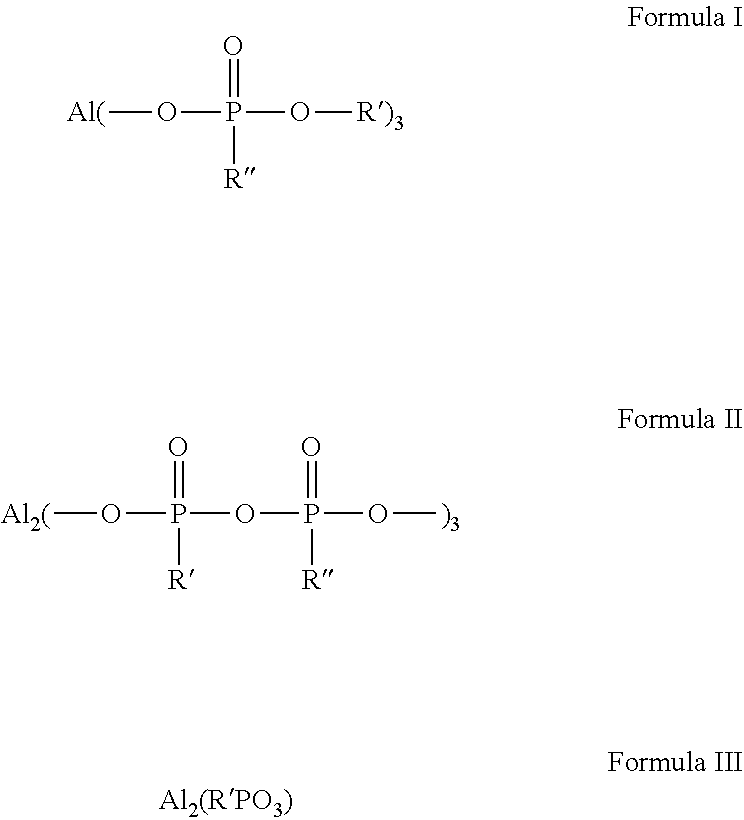Non-flammable hypophosphite metal salt based powders and their use as flame retardant ingredients
a metal salt and non-flammable technology, applied in the direction of fireproof paints, etc., can solve the problems of inability to be used as flame retardant agents, colorless, flammable, toxic, etc., and achieve the effect of not being able to withstand high temperature, and reducing the resistance of phosphorus compounds
- Summary
- Abstract
- Description
- Claims
- Application Information
AI Technical Summary
Benefits of technology
Problems solved by technology
Method used
Image
Examples
Embodiment Construction
Test Method for Flammable Solids
[0073]Test conditions are according United Nations Recommendations on the Transport of Dangerous Good, Manual of Test and Criteria” (Sixth revised edition, 2015), Section 33—Division4.1—Sub-section 33.2.1.4 Test N. 1: “Test method for readily combustible solids”. The ability of a substance to propagate combustion is tested by igniting it and determining the burning time. Basically, powder are loosely filled into a mold 250 mm long with a triangular cross-section of inner height 10 mm and width 20 mm. On both sides of the mold in a longitudinal direction two metal plates are mounted as lateral limitations which project 2 mm beyond the upper edge of the triangular cross section. The mold is then dropped three times from a height of 2 cm onto a solid surface. If necessary the mold is then filled up again. The lateral limitations are then removed and the excess substance scraped off. A non-combustible, non-porous and low heat-conducting base plate is plac...
PUM
| Property | Measurement | Unit |
|---|---|---|
| non-flammable | aaaaa | aaaaa |
| concentration | aaaaa | aaaaa |
| chemical structure | aaaaa | aaaaa |
Abstract
Description
Claims
Application Information
 Login to View More
Login to View More - R&D
- Intellectual Property
- Life Sciences
- Materials
- Tech Scout
- Unparalleled Data Quality
- Higher Quality Content
- 60% Fewer Hallucinations
Browse by: Latest US Patents, China's latest patents, Technical Efficacy Thesaurus, Application Domain, Technology Topic, Popular Technical Reports.
© 2025 PatSnap. All rights reserved.Legal|Privacy policy|Modern Slavery Act Transparency Statement|Sitemap|About US| Contact US: help@patsnap.com


